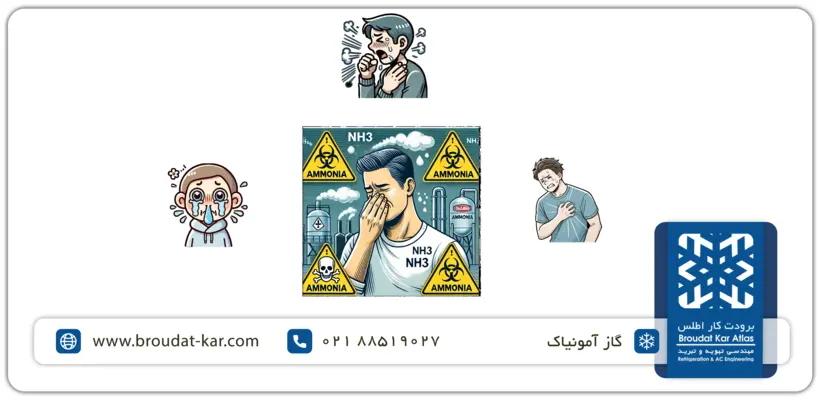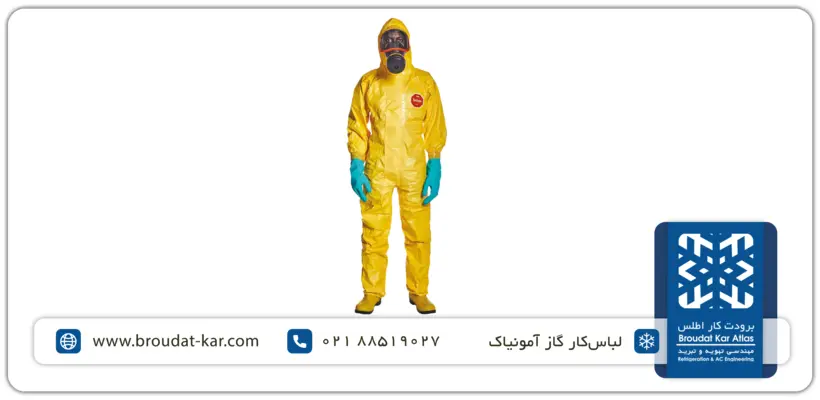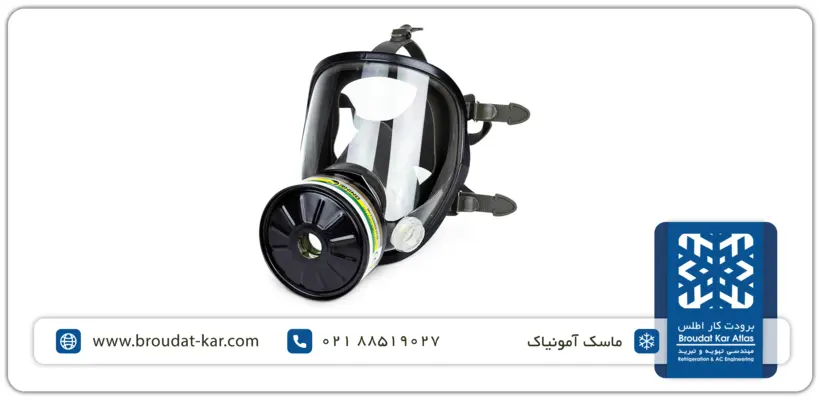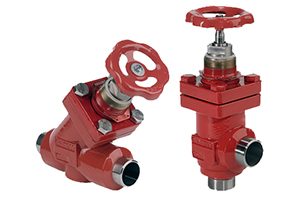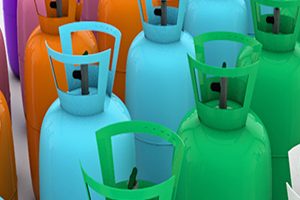Ammonia First Aid: Guidelines and Procedures
Ammonia is not classified as a cumulative toxic substance. However, its strong and distinctive odor can be detected by humans even at safe, low concentrations, acting as a natural warning signal. This self-warning property means that people are typically quick to avoid areas with high ammonia gas levels.
Additionally, since ammonia is lighter than air, the risk of accumulation is minimized through proper and efficient ventilation, which is the best preventive measure.
Dangers of Inhaling Ammonia Gas
Ammonia is a gas with a strong, pungent odor, and inhaling it can lead to serious respiratory issues. Even at low concentrations, exposure to ammonia can cause irritation and a burning sensation in the nose, throat, and lungs. Inhaling high concentrations of ammonia gas can result in severe symptoms such as:
- Persistent and severe coughing
- Shortness of breath and difficulty breathing
- Chest pain
- Runny nose and watery eyes
- Skin irritation and redness upon contact with the gas
Proper safety measures, such as using protective equipment and ensuring adequate ventilation, are essential to minimize the risks associated with ammonia exposure.
Long-term Effects of Ammonia Inhalation
Prolonged exposure to ammonia can lead to severe and lasting health issues. In cases of high-level exposure, ammonia inhalation may cause significant lung damage, potentially leading to complications such as pulmonary edema (fluid buildup in the lungs) and respiratory failure, both of which require urgent medical intervention. Chronic exposure to lower concentrations of ammonia can result in persistent inflammation of the respiratory tract, exacerbating pre-existing conditions like asthma, bronchitis, and other chronic respiratory disorders. Ensuring proper ventilation and safety measures is vital to prevent these long-term health effects.
To prevent complications from ammonia inhalation, it is crucial to use proper protective gear like respirators or breathing masks and follow all safety protocols in areas where ammonia gas may be present. Adequate ventilation and regular monitoring of air quality are also essential to minimize the risk of exposure.
Basic Rules for Ammonia First Aid
In cases requiring ammonia first aid, swift action is essential. The following steps should be taken promptly:
- Call Emergency Services: Dial 911 immediately to summon professional medical assistance.
- Be Prepared: Maintain a supply of sterile saline solution (0.9% NaCl) for immediate use.
- Ensure Accessibility to Water: Ensure that showers or water tanks are readily available near all ammonia equipment installations.
- Protect the Treated Individual: Safeguard the affected person during first aid to prevent further injury.
Ammonia First Aid Procedures
Inhalation Exposure
- Move to Open Space: Immediately relocate affected individuals to well-ventilated areas, removing any impediments to breathing.
- Seek Medical Assistance: Call emergency services and request oxygen equipment.
- Ensure Rest and Cover: Keep the affected person immobile and cover with a blanket.
- Address Burns: If mouth or throat burns are present and the individual is conscious, provide sips of water. For conscious individuals without mouth burns, offer hot, sweet tea or coffee. Never administer liquids to an unconscious person.
- Administer Oxygen: With medical supervision, oxygen capsules may be used to aid breathing.
- Perform Artificial Respiration: If breathing ceases, initiate artificial respiration.
Eye Injuries
- Flush Eyes: Immediately irrigate eyes with saline solution for at least 30 minutes, keeping eyelids open.
- Seek Medical Help: Contact emergency services promptly.
Skin Burns
- Flush with Water: Rinse affected skin with copious amounts of water for at least 15 minutes, removing contaminated clothing carefully during washing.
- Emergency Assistance: Call 911 immediately.
- Apply Moist Compress: Until professional medical attention is available, apply a moist compress using saline solution on the affected areas.
First Aid for Injuries Caused by Liquid Ammonia
Quick first aid is critical in cases of exposure to liquid ammonia to reduce the risk of serious complications. First, immediately move the affected person away from the contamination source to a safe area. Avoid rubbing the damaged area as this can cause additional injury. Do not expose the affected part to heat.
Carefully remove any clothing or undergarments that may restrict blood flow. Use scissors or a cutter to trim around garments stuck to the skin; do not forcibly remove them from frozen areas to avoid further damage. Afterward, clean the affected area and cover it with a sterile dressing.
What Are Ammonia Fire Extinguishers?
Ammonia gas, especially at high concentrations in confined spaces, can act as a flammable substance, requiring special precautions. In case of a fire involving ammonia, it is crucial to use the appropriate extinguishing agents. The best options for controlling an ammonia-related fire include carbon dioxide (CO₂), dry chemical powder, water spray, or suitable foam. These extinguishers are effective in minimizing the risk and controlling the fire safely.
What Should Be Done in Case of Accidental Ammonia Release?
If ammonia gas is accidentally released into the environment, follow these steps to minimize the risk of poisoning:
1. Evacuate Immediately: Leave the contaminated area quickly and isolate the affected zone to prevent further exposure.
2. Wear Protective Gear: Put on appropriate personal protective equipment (PPE) before re-entering the area.
3. Eliminate Ignition Sources: Ensure there are no sources of ignition, as ammonia is flammable in high concentrations.
4. Control the Gas Leak: Use water spray to help reduce the concentration of ammonia gas in the air.
5. Contain Liquid Ammonia: If liquid ammonia is leaking, use soil or sand to create a barrier and stop the flow.
6. Increase Ventilation: Enhance airflow by opening windows or using fans to disperse the gas quickly.
Protective Equipment for Working with Ammonia
When handling ammonia, using the right protective gear is crucial for safety. The necessary equipment typically includes:
– Head-to-Toe Protection: Safety goggles, a suitable respirator or mask (appropriate for the ammonia concentration), chemical-resistant gloves, apron, boots, coveralls, and, if necessary, a self-contained breathing apparatus (SCBA).
– Choosing the Right Equipment: The level of protection depends on the concentration of ammonia in the environment. Higher concentrations require more advanced and comprehensive safety gear.
| Ammonia concentration (ppm) | Recommended protective equipment |
| up to 250 | Cartridge mask or self-contained breathing apparatus |
| up to 300 | Breathing apparatus with supplied air in continuous flow mode or powered breathing mask |
| up to 500 | Full face mask with suitable cartridge or self-contained breathing apparatus |
Conclusion
In conclusion, if an ammonia-related accident occurs, immediate response measures like calling emergency services, moving the affected person to fresh air, and rinsing the eyes and skin with water or saline solution are vital. Additionally, using appropriate safety gear, such as masks, chemical-resistant clothing, and breathing apparatus, is essential to prevent injuries. Following these safety protocols and being well-prepared can significantly minimize the risks associated with ammonia exposure and ensure a safer working environmen.
Atlas Refrigeration Company, with its extensive experience in the refrigeration industry, is committed to partnering with organizations and factories to enhance safety. The company offers a wide range of safety equipment and services aimed at preventing and mitigating risks, including danger detection and fire extinguishing solutions.
Source: ASHRAE (The American Society of Heating, Refrigerating and Air-Conditioning Engineers)
Yes, ammonia is dangerous at high concentrations. While it is not flammable by itself, when combined with oxygen at high concentrations, it can pose a fire hazard.
A respirator or self-contained breathing apparatus should be used when ammonia concentrations exceed 250 ppm, or in situations where ammonia is present in high concentrations.
Yes, ammonia has a strong, pungent smell and can be easily detected even at very low concentrations.
No, rubbing the contact area is not recommended. The affected area should be immediately washed with water, and any contaminated clothing should be carefully removed.
Related posts
Ammonia First Aid
Ammonia Valves | Applications of Ammonia and Operating Conditions Ammonia valves play a crucial role in regulating the refrigerant within
Choosing Between Ammonia and Freon in Industrial Refrigeration Systems The decision between using ammonia or Freon in the refrigeration cycle
What is a Freon Cold Store? A freon cold store, is a cooling appliance that utilizes Freon refrigerant within its
Introduction to Ammonia Refrigeration Systems – Properties, Applications, and Equipment Overview Ammonia, with the chemical formula NH3 and the refrigerant
